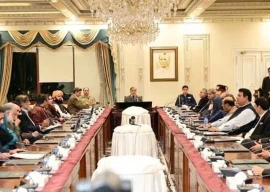
The economic uncertainty continues to plague the country as policymakers delay important decisions. As the government keeps on delaying the acceptance of IMF conditions, it inevitably increases the uncertainty along with the burden of debt accumulation, volatile exchange rate and the rising inflationary pressures. For instance, the biggest contention with the IMF is the fuel and electricity subsidies provided as a relief package by the previous government.
The new government is required to eliminate the subsidies as a prerequisite to receiving any support from the IMF. Although there has been strong resistance to the increase in fuel prices by the new government, it did increase the prices in phases, first at the end of May 2022 and then at the beginning of June 2022. However, the increase is not enough and fuel subsidies continue to be provided by the government.
This lack of fulfillment of IMF conditions keeps delaying the provision of much-needed funds. The uncertainty due to the delay in receiving crucial financing has led to volatility in the exchange rate, increase in inflationary pressures, adoption of policies by the State Bank of Pakistan (SBP) to reduce demand and tighten the flow of money. This is further exacerbated by the increasing risk of default. As the rise in fuel and energy prices is inevitable, the uncertainty due to the delay adds to the economic burden on the masses.
The expected IMF financing will provide the much-needed relief to all stakeholders in the economy. Unfortunately, tough politically unpopular decisions, such as the increase in fuel prices and withdrawal of electricity subsidies, are needed to reduce economic uncertainty. The SBP recently launched its data portal, Easy Data, to facilitate researchers, analysts and journalists. This provides upto-date figures of thousands of indicators.
The following analysis is based on the data extracted from the portal. The balance of payments crisis is driven by the deficit in the current account balance. The deficit in the third quarter of FY21 was $626 million, but it rose to $4 billion in the third quarter of FY22. The deficit at the end of first three quarters of FY22 surpassed $13 billion. However, there is a silver lining as the increase in the deficit has slowed in recent months.
The monthly balance of payments data shows that the monthly deficit between September 2021 and January 2022 was above $1 billion per month, with the deficit rising to $2.5 billion in January 2022. However, the deficit decreased to $519 million in February 2022, a sharp decrease of roughly $2 billion monthon-month. Since then the monthly deficit numbers have not increased much beyond $1 billion. The previous government had somewhat successfully managed to curtail the ballooning current account deficit.
Import payments
The analysis of the current account balance requires a closer inspection of the statistics of import payments. Movements in two key items stand out in recent months – imports of petroleum group and ‘other imports’. The latter is defined as imports that are arranged under deferred payment. Other imports peaked at $1.12 billion in January 2022, and declined to $160 million in February 2022, with overall imports declining from $6.3 billion to $5.1 billion.
The average value for other imports in the last three months has been lower than the average reported between April 2021 and January 2022. The lowest then was $276 million, while it remained less than that in the prior three months. Unfortunately for Pakistan, the import payments for the petroleum group increased by almost $700 million between January 2022 and April 2022, with crude and LNG substituting the final petroleum products.
Import payments collapsed to $1.1 billion in January 2022 but rose to $1.8 billion in April 2022. Imports of the food group and machinery group declined, with the former decreasing by $200 million in the same time period. Therefore, the main issue has been the rising consumption of imported fuel in Pakistan, which needs to be curtailed with better reforms in the fuel and energy market. It is unlikely that the demand for consumption goods is leading to the disequilibrium in the trade balance.
Import bans may have their appeal with some experts but are unlikely to fulfill their purpose, particularly as they may encourage dollar outflows through the informal channels as well as result in various forms of malpractices. The net reserves with the SBP, an important indicator of the impending balance of payments crisis, are on a downward trend. They were at $20.1 billion on August 31, 2021 and declined to $10.5 billion on April 30, 2022.
The biggest decline was reported in March 2022, as the reserves declined by $5 billion. The import cover is now for less than two months. Furthermore, total long-term principal payments were at $4 billion at the end of third quarter of FY22, primarily driven by payments of government’s commercial loans. This is the highest-ever in the history of Pakistan. Renewing maturing loans will assist Pakistan on the balance of payments front.
Lastly, exports and remittances both contribute significantly to the inflows into Pakistan. It has been widely reported that Pakistan has performed exceptionally well in terms of the inflow of export receipts and remittances. The post-pandemic recovery has set a new trend in the export receipts. For instance, Pakistan exported goods worth between $250 million and $415 million monthly to the US between 2011 and 2020.
Since the recovery, there has been a sharp upward swing with Pakistan reporting more than $640 million in export receipts from the US in December 2021. A similar trend is seen for the export receipts from the UK as monthly exports also increased. Exports from Pakistan have finally become less stagnant, which is promising indeed.
The same can be said for the remittances as the country has attracted more inflows from its major remitting partners postCovid-19 than it did prior to it. Therefore, it is important for the government to adopt the right mix of policies involving less fuel and energy subsidies but higher growth rates for exports and remittances.
THE WRITER IS THE ASSISTANT PROFESSOR OF ECONOMICS AND RESEARCH FELLOW AT CBER, INSTITUTE OF BUSINESS ADMINISTRATION, KARACHI




























-(1)1714378140-0/AliAminMaryam-(4)-(1)1714378140-0-270x192.webp)








COMMENTS
Comments are moderated and generally will be posted if they are on-topic and not abusive.
For more information, please see our Comments FAQ